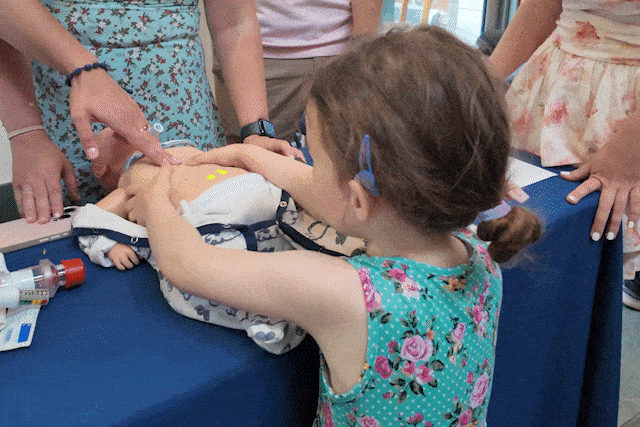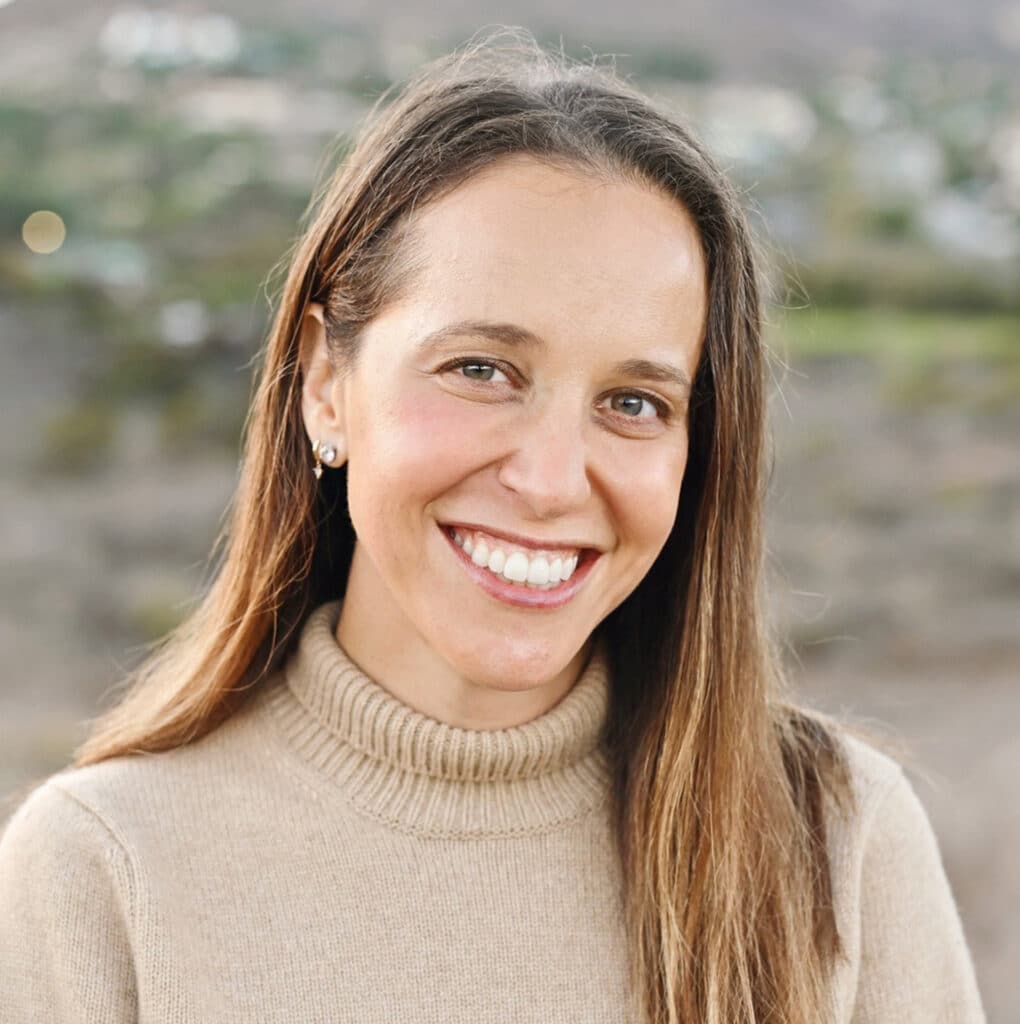
Breathing New Life Into Baby CPR Training
A team of undergrads took on the challenge of designing a responsive CPR training manikin for their MEMS senior design capstone.
Dr. Stacy Pineles, a 2000 BME graduate, relies on her Duke Engineering foundations as an eye surgeon and the leader of an NIH-supported clinical trials network

A career in medicine was never part of Dr. Stacy Pineles’ plan growing up.
So when she decided to pursue medical school partway through her undergraduate degree at Duke, she was happy to discover that much of her biomedical engineering curriculum already covered much of the pre-medical requirements.
And outside of those specific requirements, she continually relies on her engineering training as an eye surgeon who leads a national research and clinical trials program to improve pediatric eye disease treatment.
“Ophthalmologists are ‘early adopters’ of technology and have innovated using several engineering tools and concepts such as lasers, optical coherence tomography and optics,” said Pineles, who has treated strabismus, commonly known as crossed eyes, for nearly 15 years. “As an ophthalmologist, I use technology in every aspect of my practice.”
Pineles was always interested in learning and understanding the design and function of the world around her, from electrical circuits to architecture. In high school, biology piqued her interest. When she discovered the field of biomedical engineering, she knew it was the perfect combination of her skills and interests. In her college search, Pineles focused on schools with exceptional biomedical engineering programs that would also allow her to explore other passions, such as Spanish, art history and literature.
“The way of thinking that I learned as a Duke Engineer is what has probably been most useful. I am able to identify problems and analyze solutions to improve the quality of my patients’ lives. I feel that I learned how to creatively solve problems and carefully analyze all potential solutions.”
Stacy Pineles, Class of 2000
Professor of Ophthalmology and Residency Program Director at the Stein Eye Institute, David Geffen School of Medicine at UCLA
“I was thrilled to learn that a school like Duke, with all of its amazing benefits and programs, also had one of the top programs for biomedical engineering in the country,” Pineles said. “I was sold. I applied early decision and was humbled to be admitted.”

As Pineles worked through her first two years as an undergraduate BME student, she realized that she wanted to work more closely with patients as the “end users” of medical technology. She decided to pursue medical school after her time at Duke, graduating from the University of Pennsylvania School of Medicine in 2004.
During her time there, Pineles realized that ophthalmology was the perfect field for her to utilize the engineering skills she had honed at Duke and ended up attending the University of California, Los Angeles (UCLA) for its prominence and success in the field—and maybe a little for the sunny Los Angeles weather.
Pineles completed training as an ophthalmology resident and fellow in pediatric ophthalmology and adult strabismus at the Stein Eye Institute at UCLA. She also completed a fellowship in neuro-ophthalmology at the University of Pennsylvania, and a master’s degree in clinical investigation at UCLA.
Pineles said the way she was taught to “think like an engineer” at Duke has heavily influenced her work to this day.
As a strabismus surgeon, Pineles performs surgery on the eye muscles of patients who have eye misalignment. Each eye has six muscles that pull in different directions in three dimensions, so she must think like an engineer when designing each patient’s surgical plan. She also uses condensing lenses, optical coherence tomography and ultrasound regularly to view the retina in her patients. When she prescribes glasses, she uses prisms and optics concepts to optimize patients’ vision.
“On top of all of those specific examples, the way of thinking that I learned as a Duke engineer is what has probably been most useful,” Pineles said. “I am able to identify problems and analyze solutions to improve the quality of my patients’ lives. I feel that I learned how to creatively solve problems and carefully analyze all potential solutions.”
Today, Pineles is leading the Pediatric Eye Disease Investigator Group, which is a clinical trials network sponsored by the National Institutes of Health that connects over 300 pediatric eye care providers performing randomized trials to improve the treatment of eye diseases in children.
“Take the time to hone your engineering skills and to make thinking like an engineer your natural state, but also take some time to expand your horizons – study abroad, take electives at Trinity, join clubs and teams, and stay up late!”
Stacy Pineles
“I think that my work in this research network allows me to have a major impact on all pediatric patients with eye diseases across the country and the world, and so I am proud to play the role that I have in it,” Pineles said. “Providing evidence-based medicine for pediatric patients is an important goal that I have that will allow me to impact the most children and hopefully improve their vision and lives.”
To current Duke Engineering students, Pineles says take advantage of everything that Duke has to offer in the short time you have in your undergraduate education. “Take the time to hone your engineering skills and to make thinking like an engineer your natural state, but also take some time to expand your horizons – study abroad, take electives at Trinity, join clubs and teams, and stay up late,” Pineles said. “Enjoy every minute – and when you’re done, please remember to give back to the students who follow you!”

A team of undergrads took on the challenge of designing a responsive CPR training manikin for their MEMS senior design capstone.

The new minor aims to attract students across all disciplines at Duke.

Duke Civil & Environmental Engineering alumni look back on lessons learned from their uniquely structured senior capstone class.